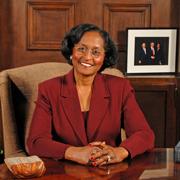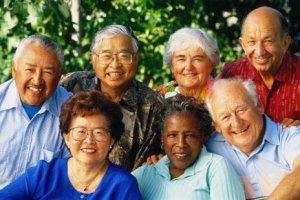
Motherhood Is Tough Today
May 5, 2010
Beliefs About Race
June 14, 2010By Janice S. Ellis, Ph.D., Kansas City, MO –
The month of May is now designated as “Older Americans Month.” Events are planned to celebrate aging by sharing information on how to optimize health and lead active, more productive lives.
I have always had mixed feeling about the need to designate a month for this or that. It usually signals an area or issue that we are neglectful of or oblivious about in our everyday lives. We have just completed two such designations: February as Black History month, and April as Child Abuse Prevention month.
There are others designations, whether days, weeks, or months, dispersed across the calendar, pleading for our collective attention. Such neglect of people, places, or things, intentional or benign, usually means there is a cost associated with it. Sometimes monetarily, sometimes, and more importantly, in the toll it takes on humanity.
We have paid, and continue to pay, dearly on both aspects of the cost equation when we examine how this society regards and treats it aging citizens. Seniors and our elderly can be such a valuable resource across generations.
Whether you are considered a part of generation X, Y or a baby boomer, it is just a matter of time that we join the senior citizen band. So from where does this short-sightedness come?
Just think about it. It begins at about age thirty. There is a mindset that the biological clock, along with the career clock, begins to wind down or races at an accelerated rate. We become consumed, if not obsessed, by the nagging thought that we have only a few years to parade our plumes, strut our stuff, procreate, and land that plum corporate position that will allow us to drive our dream car, live in our dream home in our dream neighborhood.
This perception is reinforced by the advertising industry, which promotes youthfulness often at the expense of aging.
What a waste for all involved. Seniors and our elderly citizens are, and will continue to be, a gold mine of useful resources for those who are often trying to find their way on roads already traveled. One only has to look at current and future population trends to see what great resources seniors will continue to be both now and in the future.
According to the 2000 Census, 35 million Americans, about 13 percent, are sixty-five years and over. This is a ten-fold increase since 1900. This number will show a significant increase in the 2010 Census as the nation’s baby boomers enter their golden years. Over the next 30 years, the elderly population is projected to double.
Just as America is a community of all races, we can easily add that it is also a community of all ages. Such an emphasis pays tribute to the strength of communities that result in the richness that multi-generational families bring.
The time to develop more opportunities is now, and we need to have meaningful and enriching interactions across generations, where older adults are working with children and youth to enrich each other’s lives? Older Americans can be enlisted to do much more than staff polling sites during elections, and volunteer for the various domestic and foreign aid organizations.
While such volunteer efforts are worthy and laudable endeavors, much of what seniors have to offer is unappreciated and underutilized.
Perhaps a lasting value to be gained from this year’s month-long celebration is to think of ways older members of our families, neighborhoods, social and professional clubs can become engaged in meaningful ways with the children and youth around them. Many are in desperate need of the wisdom, experience, and nurturing, that older generations can readily bring.
There are programs that seek to provide just that. The Foster Grandparent program most readily comes to mind. No doubt, many retired teachers and other professionals volunteer as tutors and mentors at neighborhood schools and in their churches.
When we look at the state of well-being of our children and youth across America, whether it is performance in schools or the rate of alcohol and substance abuse, we know that much more pairing needs to be done.
In addition, it is not just a one-way street. What opportunities exist for young people to serve the elderly, who may be frail, confined to home or in some other assisted living environment. Imagine the mutually beneficial and enjoyable experience of a first or second grader reading a half-hour a week to a senior citizen, or a seventh grader getting a better sense of history from someone who lived through the Depression or World War II.
Many problems that plague contemporary society do not require more money, but rather the realization that the solution might lay with those who have been there, and done that.
Only if we all – baby boomers, generations X, Y and Z – would pause in our worship and obsession with youthfulness long enough to see.
Feature photo is of writer and publisher, Janice S. Ellis, Ph.D., Kansas City, MO. Photo credit: usaonrace.com


